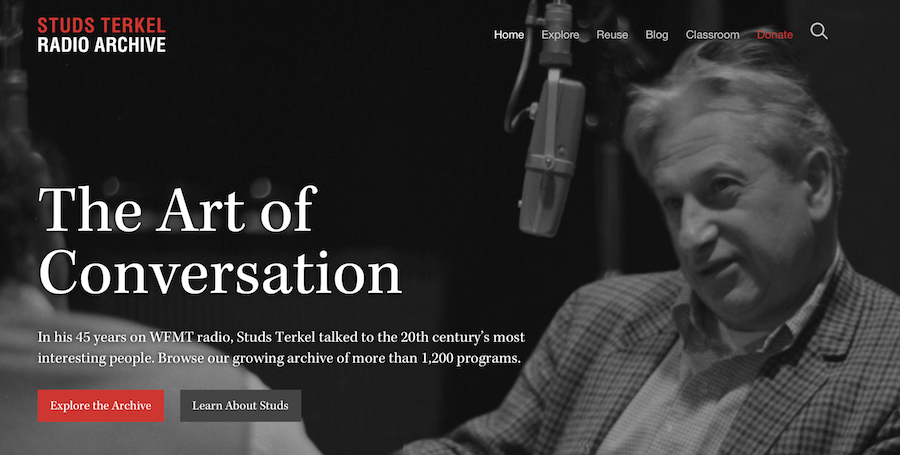Studs Terkel’s radio shows have been digitized for easy access
Studs Terkel, who died in 2008, is best remembered, if at all, by Americans at large for his popular and prize-winning books of oral history—nine of them, from Division Street(1967) to Hope Dies Last(2003). But we Chicagoans remember him more vividly for his large presence in our city over the last half of the twentieth century. He was as much identified with Chicago as Herb Caen was with San Francisco, or Jimmy Breslin with New York, or H.L. Mencken with Baltimore. He was born in New York in 1912, but he came to Chicago at age eight and never left. He went to university and law school here, acted in local theater, ran a pioneering television show, championed local candidates and causes, and, most importantly, did a five-day radio interview show on WFMTfor an astonishing forty-five years (1952–1997). Many people in Chicago either grew up or grew old (or both) along that thread of continuity in their civic lives.
That is not something we are able to share with other Americans. A thread of continuity is easily snapped. That is why Terkel’s books, addressing an audience not constricted in time or space, seem more solid and lasting. When he died, he left all the recordings of his shows—over 5,600 of them—to the Chicago Historical Society (now the Chicago History Museum). But what was that institution to do with them? They were on deteriorating tapes, not cataloged for easy access, and could only be consulted at the place of their storage. If for some reason one wanted to listen to a show that has become a historical document (I think of Martin Luther King’s thwarted time in the city), or a show that captures the living voice of a dead celebrity—either a national one like Dorothy Parker or a Chicago one like Big Bill Broonzy—one would have to go to the museum, ask for the tape to be searched out, and listen to it on earphones in that public place. No wonder the nine books seem more inviting than the 5,600 tapes.
But all that is changing, now that books live an ever more precarious existence, and the modes of electronic access pervade our lives. Thanks to the dedicated work of individuals, foundations, the National Endowment for the Humanities, and the Library of Congress, the tapes have been digitized and cataloged, and the shows now exist in a form that can easily be searched and downloaded to anyone’s computer or phone, or included as part of documentaries. Though the originals still belong to the museum, they are being tended by technicians at WFMT—the collection’s director, Tony Macaluso, and its chief archivist, Allison Schein Holmes.
